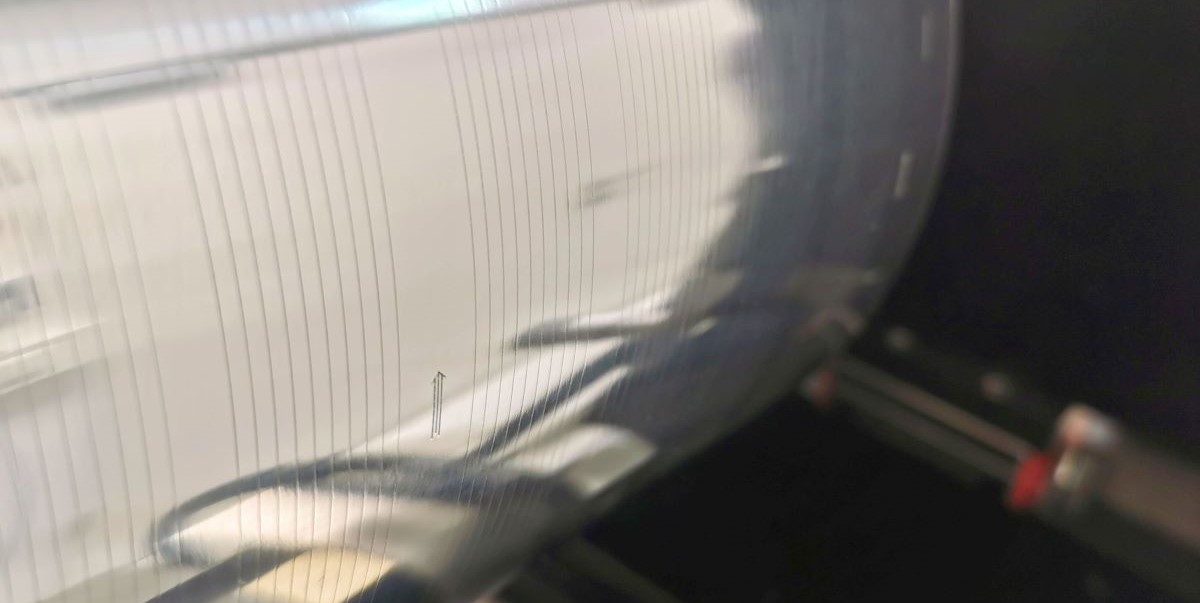Researchers at Germany’s Fraunhofer Institute for Solar Energy Systems (Fraunhofer ISE) have used indirect gravure printing for front-side metallization of silicon heterojunction (SHJ) solar cells, reducing silver consumption at cycle times of 0.5 seconds per cell, and achieving conversion efficiencies of up to 20.7%.
“A major benefit of rotary printing techniques, such as gravure printing but also rotary screen printing and flexographic printing, is the ability to strongly reduce cycle time per wafer and, thus, increase throughput per hour compared to state-of-the-art metallization methods,” research leader, Jörg Schube, told pv magazine.
The researchers noted that the efficiency results were lower by 1.7% compared to the screen-printed reference but the cycle time was reduced.
The goal of the research is to find better silicon solar cell metallization techniques in light of the PV industry’s technology roadmap, which sees more silicon heterojunction (SHJ) cells and silicon-based tandem devices ahead.
The aim is also to develop low-temperature metallization processes that use less silver, but also operate at high throughput levels. For example, the researchers noted that the throughput must increase from 4,000 wafers per hour per lane to 9,500 wafers per hour per lane, which corresponds to cycle times of 0.9 seconds and 0.5 seconds per cell, respectively.
Such constraints point to a metallization technique based on technologies, such as parallel dispensing, inkjet printing, rotary printing, or FlexTrail, said the researchers. FlexTrail is a novel printing technology developed by Fraunhofer ISE.
The Fraunhofer ISE team decided to focus on a rotary printing technique known as indirect gravure printing – a technology used in high-volume, high-quality magazine and catalog printing or in the packaging industry.
The team used industrial SHJ precursors for the experiment and rear side screen printing of fingers. The indirect gravure printing was applied to the samples’ front side using gravure widths of 50 μm and 80 μm. Besides gravure width, the number of inking applications on the transfer cylinder was varied. A reference screen printed device was also prepared.
All samples were then annealed, laser cut, and mechanically cleaved into half cells, followed by IV and electroluminescence testing, busbar printing, and drying steps. Characterization included confocal microscopy, scanning electron microscope (SEM) and four-point probe measurements.
The samples made with the champion indirect gravure printing process had a mean width of 65 μm and a mean finger height of 5 μm. When utilized for front metallization, the SHJ solar cells had conversion efficiencies of up to 20.7%, which is 1.7% [absolute] less than the reference front side, screen-printed solar cells, but the cycle time was reduced, stressed the team.
The team noted that to the best of its knowledge, “these are the highest-efficient SHJ solar cells featuring gravure-printed metallization reported so far.” It added that even without optimization, the champion indirect gravure printing process “can meet the demand for increasing throughput,” and potentially reduce costs in PV manufacturing.
Schube said the team was surprised at how easily it could achieve a “significant” height of the printed metal contacts right at the start of utilizing indirect gravure printing. “Using an appropriate production platform enables cycle times of 0.5 seconds per cell, and even lower. This high-throughput potential together with the durability of gravure sleeves can lead to a great advantage of this printing technique over state-of-the art metallization schemes,” he explained.
In subsequent solar cell simulations, the researchers found that without further process optimization, indirect gravure printing can be applied as rear metallization for SHJ solar cells with only a 0.1% loss in conversion efficiency compared to screen printing.
However, the researchers noted there is room for improvement with this variant of rotary printing. Specifically, they mentioned finger resistance and contact resistivity at the contact/indium tin oxide interface could be reduced by “adapting ink formulation and annealing conditions”. In addition, they noted that better machine alignment could improve homogeneity of contact fingers, and optimized gravure design could reduce finger width, while keeping finger height at 5 μm or greater.
The team asserted that although they experimented with SHJ devices, the results can be transferred to other high-efficiency wafer-based cell concepts demanding low-temperature metallization, such as perovskite silicon tandem devices.
The research team included scientists from the Continental Center for Functional Printing Technologies (CFPT), an R&D unit of automotive industry supplier Continental, and gravure producer Sächsische Walzengravur (SWG).
Its work is described in “High-throughput indirect gravure printing applied to low-temperature metallization of silicon-based high-efficiency solar cells,” published in Energy Technology. “The published results are very encouraging for the whole team to keep on developing this innovative metallization approach. Next steps are to reduce the width of the printed contacts and to optimize the design of the metal grid layout,” Schube said looking ahead.
This content is protected by copyright and may not be reused. If you want to cooperate with us and would like to reuse some of our content, please contact: editors@pv-magazine.com.








By submitting this form you agree to pv magazine using your data for the purposes of publishing your comment.
Your personal data will only be disclosed or otherwise transmitted to third parties for the purposes of spam filtering or if this is necessary for technical maintenance of the website. Any other transfer to third parties will not take place unless this is justified on the basis of applicable data protection regulations or if pv magazine is legally obliged to do so.
You may revoke this consent at any time with effect for the future, in which case your personal data will be deleted immediately. Otherwise, your data will be deleted if pv magazine has processed your request or the purpose of data storage is fulfilled.
Further information on data privacy can be found in our Data Protection Policy.